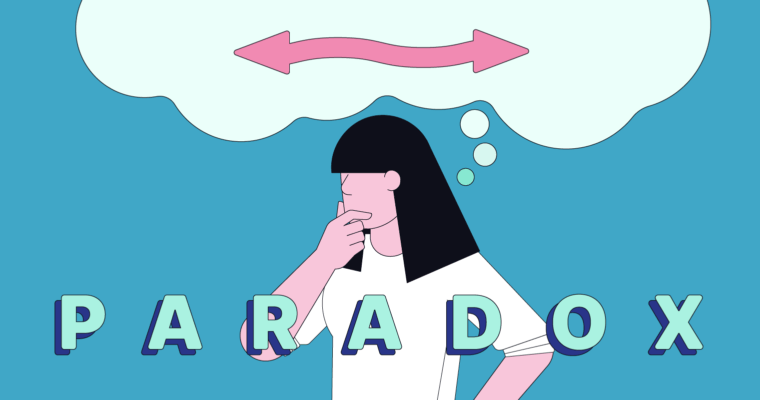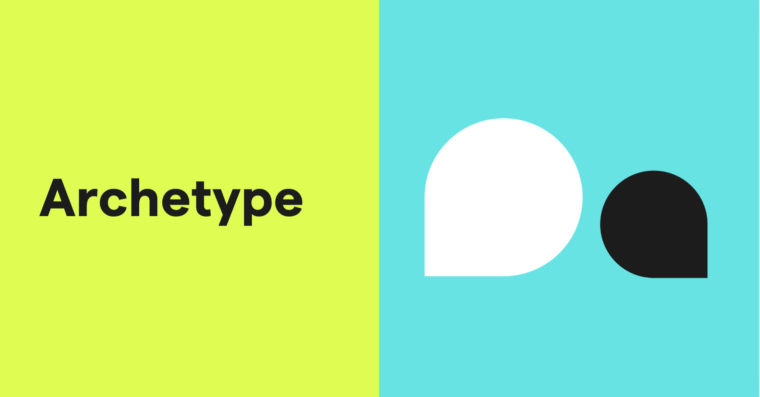
“The first rule of fight club is you do not talk about fight club.”
This famous line is from Chuck Palahniuk’s 1996 novel, Fight Club, and it leaves an impression. Not only does it shroud the fight club in mystery, but it forces the reader to pause and think. Is he breaking the rules of fight club by talking about the rules of fight club? It’s an impervious circle and a perfect literary paradox.
A paradox is a literary device that appears to contradict itself but contains some truth, theme, or humor.
What is a paradox?
In literary paradoxes, something doesn’t seem right. They are self-contradictory statements that defy logic in such a way that the reader’s brain takes pause. This apparent contradiction is the first layer of the paradox.
The second layer of paradox is the truth behind it. With the reader’s attention fixed on the paradox, they are encouraged to look for greater meaning in the statement.
Typically, a writer wants the reader to have the smoothest reading experience possible. However, every once in a while, the writer wants the reader to stop and consider something more deeply. A paradox will do this.
When to use paradox
The main purpose of a paradox is to get the reader to pause and then to think. “I can resist everything except temptation,” declares Lord Darlington in Oscar Wilde’s 1893 play Lady Windermere’s Fan. It sounds like Lord Darlington is describing his ability to resist temptation unless that temptation is . . . temptation. What he’s actually saying, in a humorous and roundabout way, is that he cannot resist temptation. This is a paradoxical statement.
Other authors use paradox to reveal deeper truths about a character, as in William Shakespeare’s Hamlet (ca. 1599–1601). When Hamlet tells his mother, “I must be cruel only to be kind,” he is protecting her from the consequences of her actions. So although Hamlet’s actions are harsh, his intentions are good. It’s not a complete contradiction, even though it appears so at first, making it a literary paradox.
Rules for writing a paradox
It takes a clever writer to create a good paradox, and like all good writing, it requires a little work.
Even if it’s a tricky task, the rules for writing a paradox are pretty simple. First, the statement must contain an apparent contradiction. Think in opposites. Second, there must be some sort of conclusion or truth that the reader discovers after some consideration.
If your statement contains contradictions but ultimately makes no sense, it is not a literary paradox. It’s either a logical paradox or an error.
Literary paradox versus logical paradox
A literary paradox doesn’t make any sense—but only at first. The last part of that sentence—“at first”—is what distinguishes it from logical paradoxes.
In a logical paradox, there is no solution. It defies the rules of logic.
Literary paradoxes do have a conclusion, which is often reached through reason and requires just a little extra thought (exactly the writer’s intention).
Another major difference is that the message of a literary paradox is often not found in its literal meaning. In fact, its literal meaning is often beside the point.
For example, in Lewis Carroll’s 1865 book Alice’s Adventures in Wonderland (a wonderland of paradoxes, if you want to go down that rabbit hole), there is a scene where the March Hare tells Alice to take more tea.
“‘I’ve had nothing yet,’ Alice replied in an offended tone, ‘so I can’t take more.’
‘You mean you can’t take less,’ said the Hatter: ‘it’s very easy to take more than nothing.’”
It’s clear enough what Alice meant, but Carroll does not want the reader to think about whether Alice should drink some tea or not. The point of this paradox is the flimsiness of language that we take for granted and to provide a bit of humor. If this were a logical paradox, Alice and the March Hare might go back and forth forever, but that wouldn’t make for a very fun book to read.
Similar terms to paradox
There are many great literary devices that rely on opposition to create an effect on the reader. Some closely related terms are:
Antithesis: Using two things that are opposites but do not contradict one another.
“That’s one small step for man, one giant leap for mankind.” —Neil Armstrong
This is an antithetical statement—and a very poetic one at that. Armstrong uses juxtaposition (small step / giant leap and man / mankind) but does not use any apparent contradictions.
Oxymoron: Oxymorons are similar to paradoxes because they also play with contradictions. However, the contradictions in paradoxes vs. those in oxymorons happen on different scales. An oxymoron is a contradiction between two words, while a paradox is a contradiction between sentences, phrases, or even entire books. In other words, think of an oxymoron as a contradiction of terms and a paradox as a contradiction of ideas.
Irony: Irony is a situation or statement that turns a reader’s expectation on its head. It is, in other words, exactly what you don’t predict will happen. Of course, in real life, humans are full of contradictory and unpredictable behavior. So a scene that involves irony is both unpredictable and closer to real life, which would make it predictable. Is that a paradox?
Examples of paradox in literature
Paradox happens on a variety of scales, from witty one-liners to the plot of an entire book.
Joseph Heller’s 1961 novel Catch 22 is based entirely on a literary paradox and contains many smaller paradoxes.
One of the paradoxes in the book is that only a crazy man would want to fly planes in a war, but only a sane man can. So if one of the characters wants to go to war, that means he’s crazy and therefore cannot. But if he does not want to go to war, then he is sane and therefore will be sent.
Oscar Wilde is famous for his one-line paradoxes. For example, in The Importance of Being Earnest, first performed in 1895, he writes:
“To be natural is such a very difficult pose to keep up.”
Wilde uses paradox to gently, and humorously, push against societal norms. With this line, Wilde’s character admits that appearing “natural” in his society is itself an unnatural act.
George Orwell also used paradoxical statements to comment on the absurdity of his political time. In his 1945 book, Animal Farm, he wrote:
“All animals are equal, but some are more equal than others.”
Logically, one thing cannot be “more equal” than another thing—that cancels out the meaning of equality. But Orwell is not challenging mathematical conventions; he’s remarking that, within the farm’s unjust society, “equality” has lost its meaning.
Paradox FAQs
What is a paradox in writing?
A paradox in writing is a statement that appears to contradict itself but upon further inspection reveals a deeper truth, meaning, or joke.
How is a paradox structured?
A paradox can be a sentence, a phrase, or an entire book theme. It contains an apparent contradiction and a deeper truth. If the contradiction is unsolvable, it’s a logical paradox. If it happens at the level of individual words, it’s an oxymoron.
What is the purpose of a paradox?
A paradox forces the reader to pause and think twice. Encountering seemingly contradictory elements, the reader must think critically to understand their meaning.






